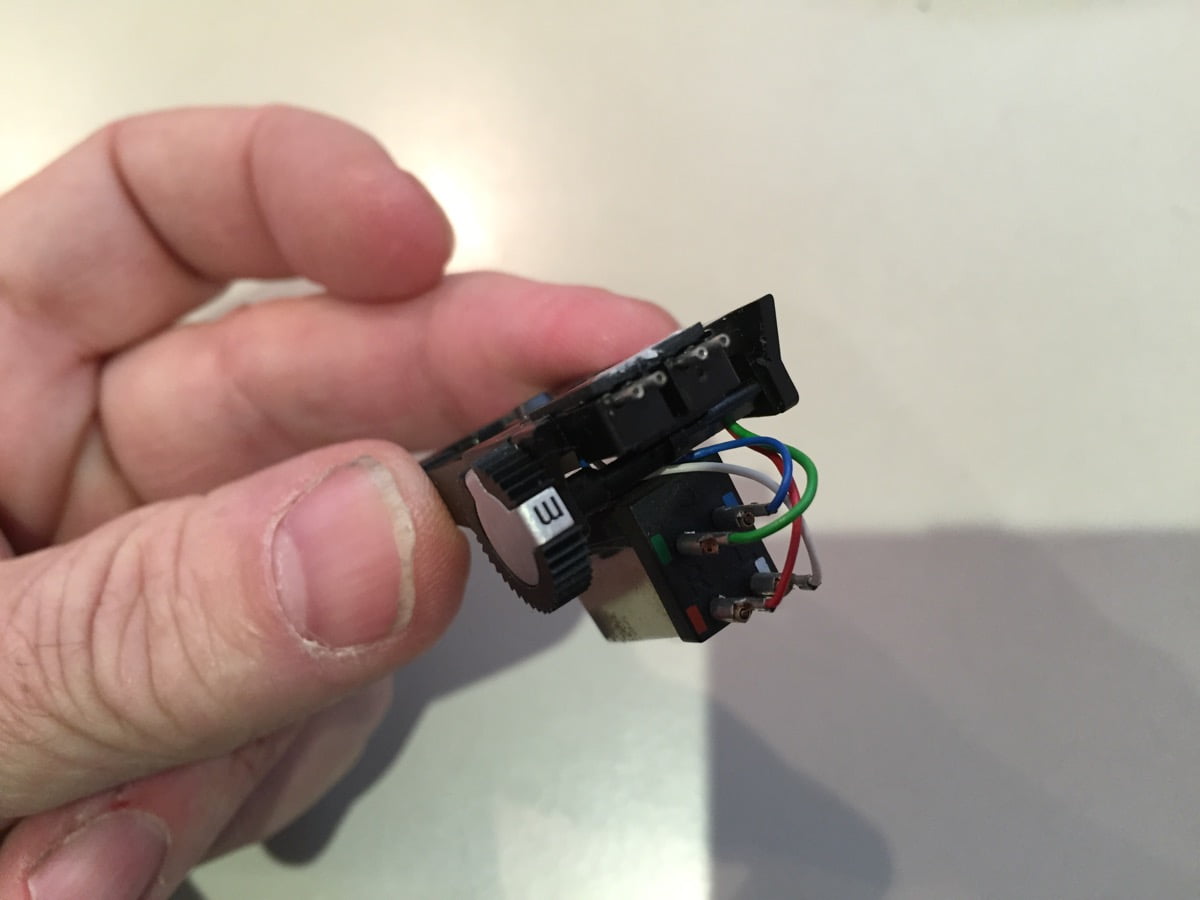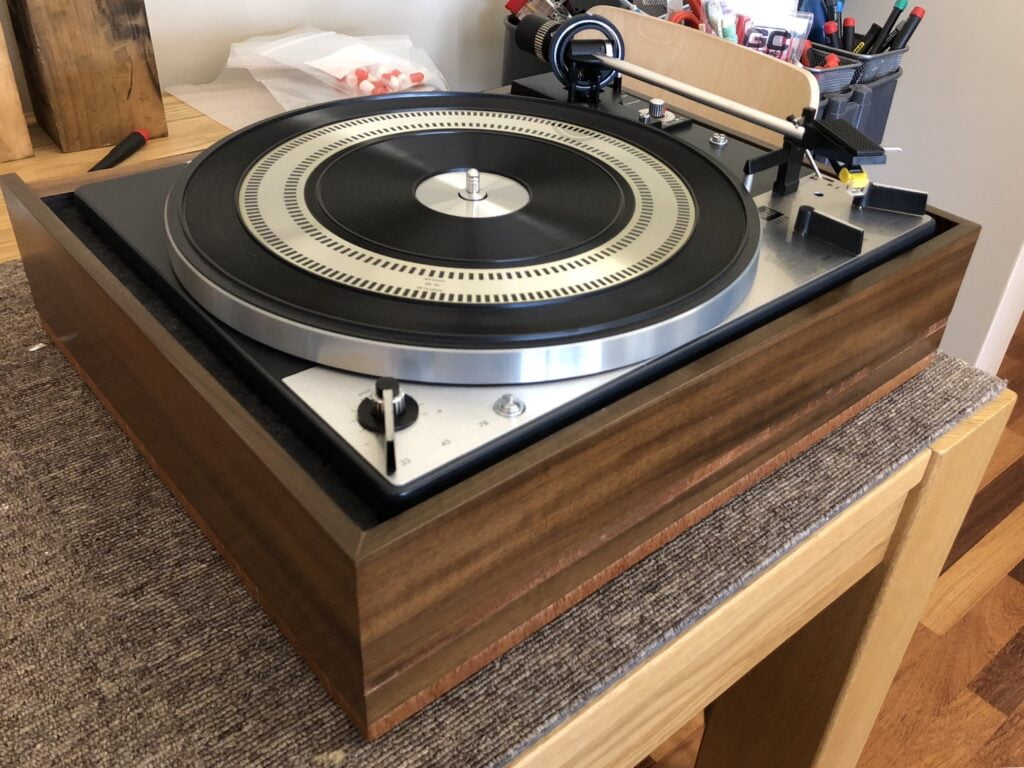The Dual 1228 idler-drive turntable is a great entry-level deck and a little cooler than many others. You need to be aware of potential issues with this and other Dual turntables from this era, though.
A customer recently delivered his newly acquired Dual 1228 idler-drive turntable for service. The deck was not playing at the correct speed, was generating a fair bit of noise, the arm return didn’t return properly and one channel was dropping out intermittently. Most of these problems I’ve seen before on Dual decks and most are easily repaired.
The speed issue for example is usually caused by dirt on the idler wheel and driven rim of the platter. The drive mechanism also needs to be oiled regularly and these decks have often never even been serviced. Anyway, a little cleaning and lubrication and the speed issues was resolved. Servicing the spindle bearing and cleaning and lubricating the rest of the mechanicals dramatically improved the noise issues and the deck was actually working pretty well at this point.
It’s worth pointing out that, in typical German fashion, the Dual 1228 uses about 8 different lubricants, each one at specific points in the deck. You need to make sure you use the same or equivalent lubricants, or the deck just will not work correctly.
More Dual 1228 information can be found at the brilliant Vinyl Engine!


The next problem to fix was the arm return. This is a very common problem, so common in fact that I don’t think Ive ever had a Dual from this era that hasn’t needed the arm return repaired! I’ve talked about this elsewhere, but basically, the arm is returned by a pressure pad moving and gripping a rubber nipple that is attached to the arm. This rubber nipple perishes over time and falls away, meaning that the pressure pad doesnt grip the arm and can’t move it back into place.
You can buy a replacement part from Dual, but I’ve developed a repair that needs no new parts from Dual and works very well. I attach a new nipple of my own making and this fixes the problem for good. I was able to repair the arm return on this Dual 1228 and it worked perfectly.


The final piece of the puzzle is what this repair blog is mostly about though – the intermittent output from one channel. Dual, in their wisdom, decided that it would be a great idea to save owners the hassle of reattaching head-shell wires every time they changed their cartridge. To this end, they designed an elegant, but flimsy cartridge quick-change system, that required you to install a cartridge in a ‘carrier’ which then just slid into place and was locked and released by the arm lifter on the head-shell.
This sounds great doesn’t it? Not really. The system was let down by it being made entirely of fragile plastic castings and of course it introduced yet another series of electrical interfaces, the extra ones being the little gold fingers of the head-shell and the gold spring-loaded rods in the cartridge carrier that pressed against them.
The problem is that all of this is fragile and subject to dirt and contamination, reducing performance and weakening the plastic parts. I did my very best to refurbish the connections and repair the broken plastic cartridge carrier, but ultimately the weakness of this design is what made the intermittent channel issue irreparable. I thoroughly cleaned everything and removed a lot of dirt from the contacts, as you will see below. You will also see that the little plastic cover that held the spring-loaded rods in place had broken loose and this was not easy to repair. I tried very carefully gluing it back in place with a special cyanoacrylate glue, but this made little difference. The rods were not making good contact the gold head-shell connectors and, whilst I was able to considerably improve things, the end result was still not 100%.
In the end I had to return this particular Dual 1228 to the customer in much better working condition, but with the understanding that he would need to find another cartridge carrier, one that was not broken! This is the hard part – finding one of these parts for individual sale and, more importantly, finding one that isn’t already broken is not be easy.







Discover more from LiQUiD AUDiO
Subscribe to get the latest posts sent to your email.





Great write up as usual.Have never liked Dual turntables,too fiddly too plasticky for me.